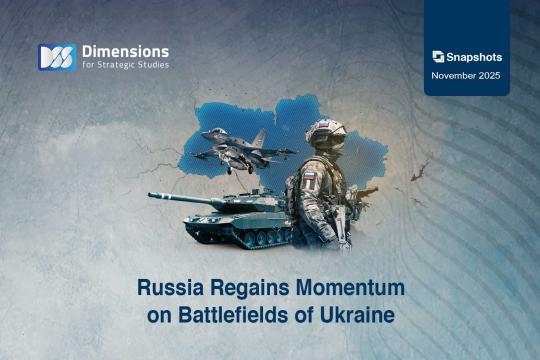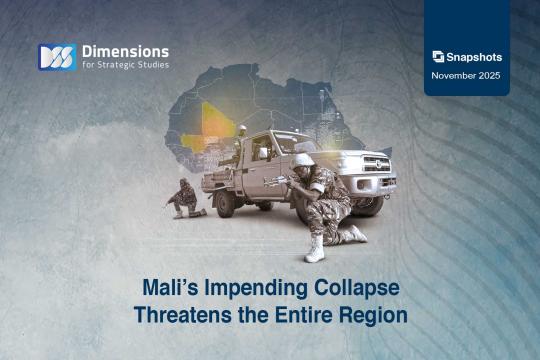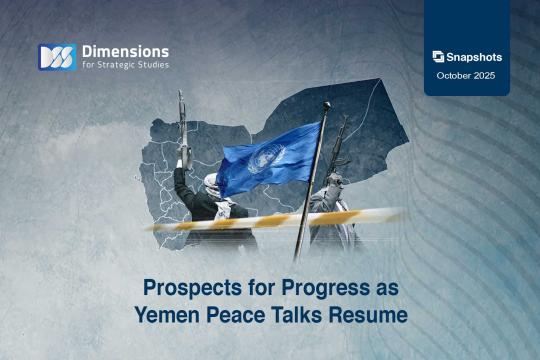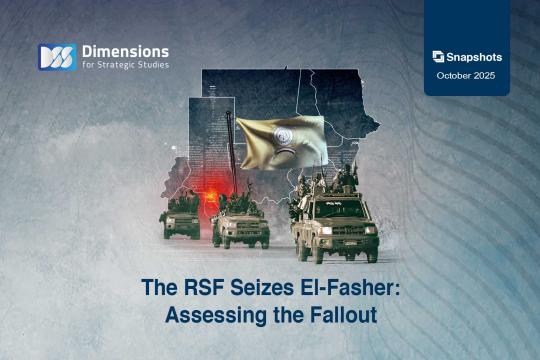
Exploring the War Scenarios in Gaza: What Are the Possibilities?
2023-11-142130 view
In the wake of a 38-day long battle, Israeli forces pushed deeper into several fronts of Gaza Strip, aiming to achieve their announced goals: 'to obliterate the resistance, liberate the prisoners, and displace the residents of Gaza to Sinai, or shrink the strip's area to bring back security to the settlements.' Amidst this backdrop of colossal and unprecedented devastation across the cities of the Gaza Strip, caused by the Israeli military's atrocities against civilians, over 12,000 were martyred, predominantly children and women. The damage included more than 60% of both public and private structures. The war, backed by international powers, notably the USA and various European nations, led to over half of Gaza's population being internally displaced.
This has had a profoundly negative impact on global opinion. Speculating on the most likely endgame scenario of the war is fraught with possibilities of being right or wrong, especially given that this round of confrontation between the occupiers and the resistance is unlike any of the previous ones.
Undoubtedly, the current war on Gaza differs from its predecessors in various aspects. This distinction is underscored by the intensity of Israeli fire targeting both civilians and resistance fighters alike. This has led many observers to speak of two simultaneous wars. One aims to target civilians, seeking to eradicate the very foundations of life in the Gaza Strip, thereby making the plan of displacement a reality, or leaving no options for staying in Gaza. The other war, according to the observers seeks to achieve any military success against the resistance in Gaza. Notably, the prolongation of the war serves not only as a pressure factor on the people and resistance in Gaza, but it also leaves Netanyahu and the Israeli front on tenterhooks, anxiously awaiting any news about the fate of approximately 250 military and civilian captives who fell into the hands of the Al-Qassam Brigades during the 'Al-Aqsa Flood' operation on October 7, 2023.
As the military operations persist and all regional and international efforts for a ceasefire fail, the U.S. administration and Netanyahu's government are compelled to announce a daily four-hour 'humanitarian truce' on November 9, 2023. Yet, Yoav Galant, the Israeli Defense Minister, quickly denies any ceasefire just hours after the declaration of this tactically-described truce. Within this context, four prominent scenarios emerge:
1) The Scenario of Continuing the Current Situation "Prolonging the War":
This scenario assumes that Israel will continue its war on Gaza regardless of local and international pressures, hoping to achieve its declared objectives. Conversely, the resistance is presumed capable of enduring, especially since the Israeli political and military leadership speaks of the possibility of the war lasting for many more months, regardless of the human and material losses, which are described by Israel as painful. In contrast, the resistance's ability to stand firm and inflict more losses on the Israeli ground forces remains a significant factor.
Conditions for Realizing the Scenario:
For this scenario to materialize, the Israeli ground forces must control extensive areas of the Gaza Strip and reach the infrastructure of the resistance, while enduring painful losses in terms of soldiers and military equipment. Moreover, the realization of this scenario requires internal Israeli support, taking into account the popular and political pressures on Netanyahu's government. There is a concern over the death of more captives due to the intensive aerial bombardment against civilian targets in Gaza, as well as a loss of confidence in the military force due to the absence of any declared military achievements after three weeks of ground warfare.
On the other hand, the continuation of what is increasingly described as a genocide against the residents of the Gaza Strip is met with international public pressure on the powers supporting Israel. Tel Aviv needs to ensure calm on the West Bank and regional levels, as there are some indications that warn of the opening of other fronts that Israel and its allies fear.
Likelihood of the Scenario:
This scenario is considered the most likely; as a cessation of the war without Israel achieving its goals would mean an explicit admission of defeat to the resistance, thus complicating its political stance. The resistance is not content with merely exchanging prisoners as in previous rounds; it has numerous demands, including lifting the siege on Gaza and resuming the peaceful political process; especially since October 7th undermined Israel's dream of expansion based on settlements. Additionally, an end to the war in this manner would spell the end of Netanyahu's political and personal life. One reason for prolonging the war is Netanyahu's evasion of various corruption and national security-related issues, given that he ignored warnings preceding the "Al-Aqsa Flood." In this case, continuing the war represents a tactic of fleeing forward to broaden Netanyahu's options and delay his accountability.
2) Scenario of Gradual Humanitarian De-escalation Leading to a Ceasefire:
This scenario presumes that initiating a humanitarian de-escalation process will lead to more such steps, serving as steps towards building a complete peace that would allow Netanyahu to step back from the war. It's believed that Netanyahu has bitten off more than he can chew, meaning that the declared Israeli objectives of the war seem unattainable in light of the Israeli ground forces' failure to achieve clear victories over the resistance in Gaza.
Conditions for Realizing the Scenario:
This scenario requires a consecutive series of humanitarian truces, coupled with Israel's continued failure to achieve its operational objectives, such as not gaining control over areas with persistent resistance strikes and missiles targeting Israeli cities. As a result, prolonging the war becomes insignificant and costly for Israel, both militarily and politically. This is evident in the gradual decline of Israel's declared objectives. Ceasefire has become contingent on the release of prisoners, while objectives like crushing the resistance and displacement are being sidelined. Additionally, the escalation of global public outrage, particularly in Western societies, may compel the supporting countries to reconsider their stance or force Israel into humanitarian truces leading to a ceasefire.
Further bolstering this scenario is the success of regional and international efforts related to de-escalation, especially given that the Hamas leadership headed to Cairo on November 9th. This indicates a resurgence of Egypt's political role, which had been nearly absent for over a month during the war. Historically, Egypt's role has been fundamental in mediating and establishing truces, as witnessed in previous rounds.
Likelihood of the Scenario:
The relative likelihood of this scenario is not much less than the previous one; the ambiguity of the situation and Israel's retreat from its goals underscore its inability to decisively win. At the same time, Israel likely cannot sustain further military, economic, and civilian losses. The devastation in Gaza is mirrored by a halt to life in Israeli cities. Moreover, international support for Israel hinges on military results that have not yet been achieved. This has recently led the families of the occupation's captives to attempt to nationalize their captives under Western nationalities to internationalize their cause and exert global pressure on the resistance, in addition to ensuring continued international support for the Israeli stance.
3) The Scenario of Unilateral Cessation of War:
This scenario assumes Israel opting for a unilateral cessation of war, similar to some previous rounds.
Conditions for Realizing the Scenario:
This scenario requires Israel to achieve any significant partial victory over the resistance, like a ground advance to the Al-Shifa Hospital, which Israel considers a Hamas stronghold, or successfully using the humanitarian truce to evacuate the northern neighborhoods of Gaza, pressuring the resistance to surrender captives in exchange for allowing aid into Gaza.
Likelihood of the Scenario:
The chances of this scenario are less compared to the previous ones, as the causes and objectives of the current war differ from previous rounds. Also, Israel appearing not victorious would be considered a loss for its supporting international coalition. Achieving this scenario doesn't remove Hamas from power and might be seen by many as a victory for its regional allies over the American-backed camp.
4) The Scenario of Resistance Surrender in Gaza:
Israel is betting on achieving victory over Hamas by pushing it towards surrender due to the high number of martyrs and the level of destruction that could undermine the popular support base of the resistance in Gaza. The occupation focuses on destroying all health care facilities, pressuring the United Nations Relief and Works Agency to halt its humanitarian services, and targeting all essentials of life to achieve this goal.
Conditions for Realizing the Scenario:
To realize this scenario, a significant rift must widen between the Palestinian factions and their popular base in Gaza, coupled with the resistance's inability to withstand and counter the Israeli ground offensive.
Likelihood of the Scenario:
Israel is focusing on this scenario, discussing Gaza's future post-Hamas. The Israeli ground incursion is still in its early stages, concentrating on specific areas without considering the spread of factions throughout the Gaza Strip and their popular support. The resistance's courage and ferocity in combat, engaging in confrontations from scratch without hesitation, are acknowledged even by the Israeli media. Many analyses in Israel admit the fierceness of the resistance, which diminishes Israel's chances of enforcing surrender.
In conclusion, the outcomes of military operations on the ground play a crucial role in steering towards any of the aforementioned scenarios. Equally significant is the pressure, both local and international. However, as of this moment, the scenario of prolonging the war seems most likely, as it aligns with Israel's objective of displacing the population. Following this is the scenario of gradual de-escalation leading to a ceasefire, albeit to a lesser degree.





